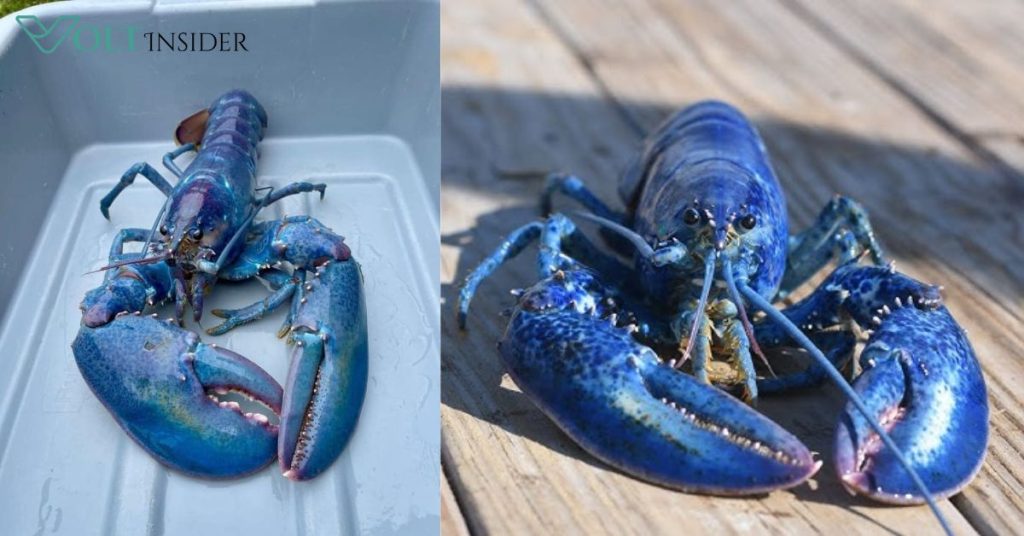Introduction: What Makes the Blue Lobster So Unique?
The blue lobster is one of nature’s most striking and rare crustaceans, captivating marine enthusiasts and researchers alike with its vibrant blue coloration. Unlike the common reddish-brown lobsters found along many coastlines, the blue lobster’s dazzling hue is a genetic anomaly that occurs in only about one in every two million lobsters. This rarity makes the blue lobster a subject of fascination, not only for its beauty but also for the insight it offers into marine biology and genetic diversity.
What truly sets the blue lobster apart is its bright, electric-blue shell that almost seems to glow underwater. This rare color is caused by a genetic mutation affecting the proteins responsible for pigment formation. While lobsters generally blend into their environment with dark and mottled shells, blue lobsters stand out, making their survival strategies and life in the wild all the more intriguing. As such, they have become emblematic of both marine biodiversity and conservation efforts.
Blue lobsters serve as an excellent example of how genetic variations, though rare, contribute to the rich tapestry of life beneath the waves. Their discovery often sparks excitement in fishing communities and aquariums, where they are considered prized finds and symbols of good luck.
The Science Behind the Blue Lobster’s Coloration
The vibrant blue coloration of lobsters is not a result of pigmentation, as in the case of red lobsters, but rather a unique genetic mutation. Blue lobsters carry a genetic anomaly that causes an overproduction of a certain protein. This protein, when combined with a red carotenoid molecule present in their diet, results in the brilliant blue coloration that sets them apart from their counterparts.
In most lobsters, the red pigment astaxanthin is bound to a protein called crustacyanin, which gives the lobster its typical brownish-green color. However, in blue lobsters, the genetic mutation leads to an excess of crustacyanin. This surplus causes the astaxanthin molecules to bind differently, resulting in a blue hue instead of the usual brown or green.
This fascinating phenomenon highlights the intricate ways in which genetics and biochemistry intersect to produce the diverse array of colors found in nature.
Habitat and Distribution: Where Are Blue Lobsters Found?
Blue lobsters, specifically the American lobster (Homarus americanus), are primarily found along the Atlantic coast of North America, ranging from Labrador in Canada to New Jersey in the United States. These lobsters inhabit both deep and shallow waters, favoring rocky substrates where they can find shelter in crevices or burrows. Their preference for such environments provides them with protection from predators and harsh environmental conditions.
The occurrence of blue lobsters is exceedingly rare, estimated at approximately one in every two million lobsters. This rarity is due to a genetic mutation that causes an overproduction of a specific protein, leading to the blue coloration. While the exact reasons for this mutation are not fully understood, it has been observed that blue lobsters are more frequently reported in certain regions, such as the northeastern United States and parts of Canada.
In the wild, blue lobsters are typically found in the same habitats as their more common counterparts. However, due to their striking coloration, they are often more noticeable when caught, leading to increased reports and interest from both the public and scientific communities.
It’s important to note that the blue coloration does not confer any significant survival advantage or disadvantage to the lobsters. Their survival and distribution are primarily influenced by environmental factors, availability of food, and the presence of predators. Nonetheless, the discovery of a blue lobster often garners significant attention, highlighting the incredible diversity and wonder of marine life.
Conservation Status and Human Impact
The blue lobster, a rare genetic variant of the American lobster (Homarus americanus), is not a separate species but a color morph resulting from a genetic mutation. Despite their striking appearance, blue lobsters do not possess unique ecological traits that would influence their conservation status. Therefore, their conservation is tied to the overall health and management of the American lobster population.
Population Status
The American lobster population is primarily assessed in two regions: the Gulf of Maine/Georges Bank and Southern New England. According to NOAA Fisheries, the Gulf of Maine/Georges Bank stock is not overfished, while the Southern New England stock is overfished, though management measures are in place to promote population growth.
Conservation efforts focus on sustainable fishing practices, including regulations that protect juvenile lobsters and ensure adequate egg production. For instance, lobsters smaller than 3-1/4 inches in carapace length are required to be returned unharmed to the sea.
Human Impact
Human activities have significant impacts on lobster populations. Overfishing, habitat destruction, and climate change pose substantial threats. Overfishing can deplete lobster stocks, while habitat destruction, such as the loss of kelp forests and coral reefs, reduces shelter and food sources. Climate change leads to rising ocean temperatures, which can cause lobsters to move into deeper, colder waters, affecting their distribution and behavior.
Additionally, the lobster fishing industry must address bycatch and gear impacts. Regulations are in place to minimize bycatch, and fishing gears used to harvest lobsters have minimal impacts on habitats.
Conservation Measures
To mitigate human impacts, various conservation measures are being implemented. These include establishing no-take zones, implementing sustainable fishing practices, and monitoring lobster populations to ensure their health. For example, the establishment of no-take zones has been shown to enhance lobster populations by providing areas where lobsters can grow and reproduce without fishing pressure.
Furthermore, addressing the impacts of climate change is crucial. Efforts to reduce greenhouse gas emissions and protect marine habitats can help maintain the conditions necessary for lobster populations to thrive.
Cultural Significance and Fascinating Facts
The blue lobster has captivated human imagination for centuries, often symbolizing rarity and good fortune. This striking crustacean’s unusual coloration has led to its prominence in various cultures and folklore.
Symbolism and Folklore
In many fishing communities, discovering a blue lobster is considered a sign of good luck. For instance, when two fishermen off the coast of Nova Scotia caught two bright blue lobsters within days of each other, it was seen as an auspicious event. Such occurrences are rare, with the odds of finding a blue lobster estimated at one in two million.
The rarity and beauty of the blue lobster have also made it a subject of fascination in art and literature. Its vivid hue and elusive nature have inspired various works, symbolizing the mysterious and the extraordinary in marine life.
Fascinating Facts
- Genetic Mutation: The blue coloration in lobsters is due to a genetic mutation causing an overproduction of a specific protein. This protein binds with a red pigment, astaxanthin, resulting in the blue hue.
- Rarity: While blue lobsters are rare, they are not the rarest color variant. Yellow lobsters occur approximately once in 30 million, and albino or “crystal” lobsters are even rarer, with an occurrence rate of about one in 100 million.
- Diet Influence: The diet of a lobster can influence its coloration. For example, a lobster’s exposure to certain pigments or nutrients can affect the expression of the genes responsible for its color.
- Culinary Value: Despite their rarity and striking appearance, blue lobsters do not differ in taste from their more common counterparts. However, due to their uniqueness, they are often preserved in aquariums or donated to scientific institutions rather than being consumed.
- Conservation Status: The conservation status of blue lobsters is not separately assessed, as they are considered a color morph of the American lobster. However, the American lobster’s population is monitored to ensure sustainable fishing practices and ecosystem health.
In summary, the blue lobster is not only a marvel of nature due to its rare coloration but also a symbol of the wonders of marine biodiversity. Its presence in folklore, art, and science underscores its significance in human culture and our appreciation for the extraordinary in the natural world.
Conclusion
The blue lobster stands as a testament to the wonders of marine biodiversity. With an occurrence rate of approximately one in two million, these rare crustaceans captivate both scientists and the public alike. Their striking blue coloration, resulting from a genetic mutation, not only makes them a marvel to behold but also serves as a reminder of the intricate genetic variations present in nature.
While blue lobsters are not the rarest color morph—yellow, calico, and albino lobsters surpass them in rarity—they continue to be symbols of the ocean’s hidden treasures. Their discovery often sparks a sense of wonder and appreciation for the natural world, highlighting the importance of conservation efforts to protect these and other unique species.
Frequently Asked Questions (FAQs)
- What causes the blue coloration in lobsters?
- The blue coloration in lobsters is due to a genetic mutation that results in an overproduction of a specific protein. This protein binds with a red pigment called astaxanthin, forming a blue complex known as crustacyanin, which gives the lobster its blue color.
- Are blue lobsters edible?
- Yes, blue lobsters are edible. However, due to their rarity, they are often donated to aquariums or released back into the wild. The blue coloration does not affect the taste of the lobster, and once cooked, they turn the same red color as other lobsters.
- Where can blue lobsters be found?
- Blue lobsters are primarily found along the Atlantic coast of North America, from Labrador to New Jersey. They inhabit both deep and shallow waters, favoring rocky substrates where they can find shelter.
- How rare are blue lobsters compared to other color morphs?
- Blue lobsters are rare, with an occurrence rate of about one in two million. However, they are not the rarest color morph. Yellow and calico lobsters occur approximately once in 30 million, and albino or “crystal” lobsters are even rarer, with an occurrence rate of about one in 100 million.






